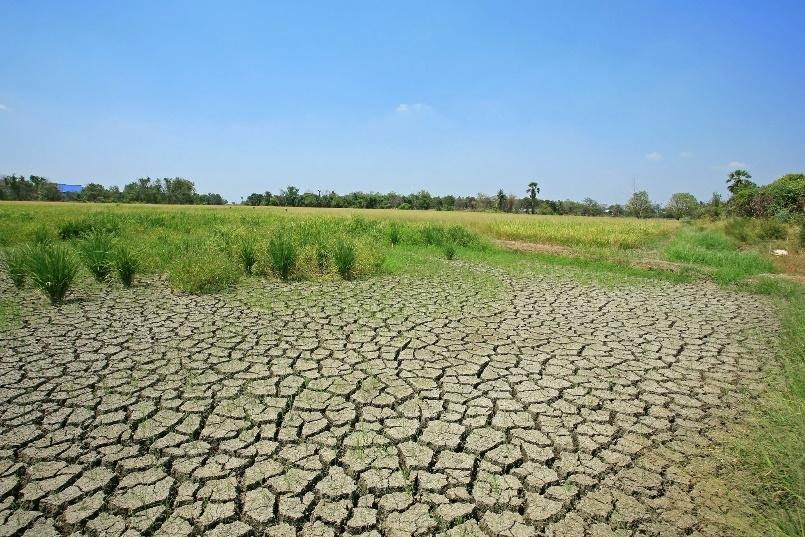
Define land degradation. Which factors lead to land degradation?
Answer
417.9k+ views
Hint: Land is an indispensable source to humankind. Over the centuries, land has been continuously and recklessly degraded. Land degradation is an important global issue in
Complete answer:
Land degradation:
Land degradation is defined as the loss or deterioration of productive capacity of soil. It is a phenomenon where the value of the biophysical environment is getting affected negatively. It is ruining the plant and causing destruction by peasants. It is a change in land health status, which results in a diminished capacity to provide services and good to the earth.
Land degradation is the negative change in the capacity of the ecosystem to provide services to humankind. It is a wider term than soil degradation and soil erosion. It is a reduction or loss of biological productivity of land due to natural processes or human activities. It leads to loss of fertility and quality of soil. It is a key to dangers occurring in nature. Types of land degradation are wind erosion, water erosion, salinization, waterlogging, decline of water table and decline in soil fertility.

Factors leading to land degradation:
Many factors lead to land degradation these includes:
Drought
Soil erosion
Soil pollution
Overgrazing
Mineral extraction
Quarrying of minerals, stone and sand.
Inappropriate irrigation
Commercial development
Poor farming practice
Deforestation
Unlimited use of pesticides and fertilizers
Desertification
Wasteland
Unsustainable land management
Temperature
Climate change
Over grafting
Dumping industrial waste
Direct/indirect human intervention
Conversion of forests into farms
Removal of natural vegetation
Cultivation in steep slopes
Degradation of marginal lands
Over exploitation of vegetation
Clearcutting
Loss of arable land due to building of roads and urbanization
Radioactivity
Soil acidification
Sheet erosion
Silting
Livestock
Urban sprawl
Monoculture leading destabilization
Dumping of non-biodegradable waste
Invasion of species
Loss of soil carbon
Overcutting
High population density
Loss of land to mining and infrastructure
Change of soil structure
Change in physical and chemical properties of soils
Human occupancy leading to hazards
Forest fires
Loss of vegetation cover
Introduction of herbivores in soil
Overuse of irrigation water
Note:
There are some methods which will be useful to control the damage due to land degradation. Construction of more dams will aid in controlling the speed of water, so that erosion can be prevented, thus supporting vegetation. Crop rotation helps to prevent overexploitation of soil for a particular crop, which helps in replenishment of soil. Afforestation can act as a cover for the soil, which will help in mitigation of erosion. Crops should be planted after harvest, which will act as a cover for soil, leading to preserving the moisture and retaining nutrients.
Complete answer:
Land degradation:
Land degradation is defined as the loss or deterioration of productive capacity of soil. It is a phenomenon where the value of the biophysical environment is getting affected negatively. It is ruining the plant and causing destruction by peasants. It is a change in land health status, which results in a diminished capacity to provide services and good to the earth.
Land degradation is the negative change in the capacity of the ecosystem to provide services to humankind. It is a wider term than soil degradation and soil erosion. It is a reduction or loss of biological productivity of land due to natural processes or human activities. It leads to loss of fertility and quality of soil. It is a key to dangers occurring in nature. Types of land degradation are wind erosion, water erosion, salinization, waterlogging, decline of water table and decline in soil fertility.

Factors leading to land degradation:
Many factors lead to land degradation these includes:
Drought
Soil erosion
Soil pollution
Overgrazing
Mineral extraction
Quarrying of minerals, stone and sand.
Inappropriate irrigation
Commercial development
Poor farming practice
Deforestation
Unlimited use of pesticides and fertilizers
Desertification
Wasteland
Unsustainable land management
Temperature
Climate change
Over grafting
Dumping industrial waste
Direct/indirect human intervention
Conversion of forests into farms
Removal of natural vegetation
Cultivation in steep slopes
Degradation of marginal lands
Over exploitation of vegetation
Clearcutting
Loss of arable land due to building of roads and urbanization
Radioactivity
Soil acidification
Sheet erosion
Silting
Livestock
Urban sprawl
Monoculture leading destabilization
Dumping of non-biodegradable waste
Invasion of species
Loss of soil carbon
Overcutting
High population density
Loss of land to mining and infrastructure
Change of soil structure
Change in physical and chemical properties of soils
Human occupancy leading to hazards
Forest fires
Loss of vegetation cover
Introduction of herbivores in soil
Overuse of irrigation water
Note:
There are some methods which will be useful to control the damage due to land degradation. Construction of more dams will aid in controlling the speed of water, so that erosion can be prevented, thus supporting vegetation. Crop rotation helps to prevent overexploitation of soil for a particular crop, which helps in replenishment of soil. Afforestation can act as a cover for the soil, which will help in mitigation of erosion. Crops should be planted after harvest, which will act as a cover for soil, leading to preserving the moisture and retaining nutrients.
Recently Updated Pages
Master Class 12 Business Studies: Engaging Questions & Answers for Success

Master Class 12 English: Engaging Questions & Answers for Success

Master Class 12 Social Science: Engaging Questions & Answers for Success

Master Class 12 Chemistry: Engaging Questions & Answers for Success

Class 12 Question and Answer - Your Ultimate Solutions Guide

Master Class 11 Economics: Engaging Questions & Answers for Success

Trending doubts
Draw a labelled sketch of the human eye class 12 physics CBSE

a Tabulate the differences in the characteristics of class 12 chemistry CBSE

Which one of the following is a true fish A Jellyfish class 12 biology CBSE

Why is the cell called the structural and functional class 12 biology CBSE

Differentiate between homogeneous and heterogeneous class 12 chemistry CBSE

Write the difference between solid liquid and gas class 12 chemistry CBSE




